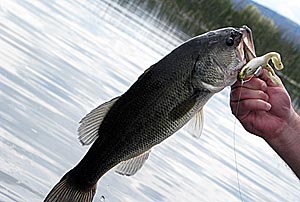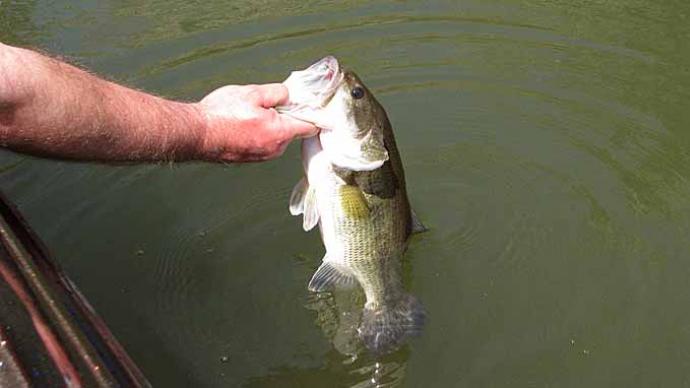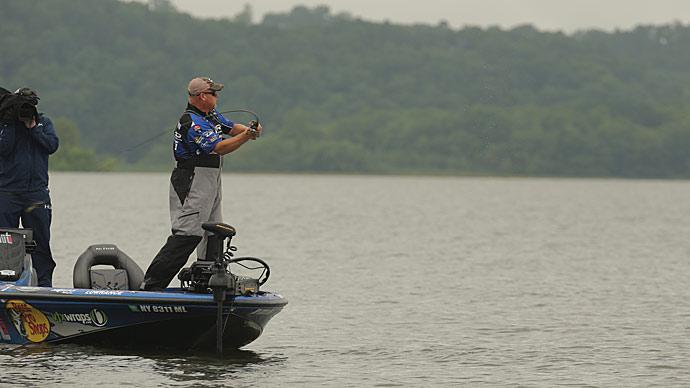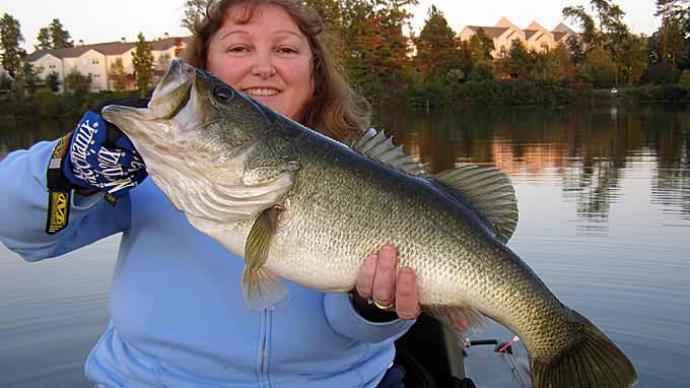
Now is a great time to be on the water. The water temperature is dropping, fish are moving off deep structure, and shad are feeding on plankton and working the surface. Everything is starting to change, and the fish are getting more aggressive.
The fall pattern begins near the end of September in Northern regions and late October in far Southern states. It’s triggered when the nights get cooler and reservoir bass begin moving from main-lake areas into bays and coves of creeks to feed heavily before winter.
That’s why baitfish are the key to fishing this time of year. The shad are migrating into the backs of creeks, and the bass are following them – and so should you.
I began to look for this movement in creeks that have little pockets and arms not far off the main channel. That is the first move bass make, after which they will wander farther back into the creek and hang out there for most of fall.
Often times bass will lounge in or near the creek channel on bright, sunny days and then move up on the flats early and late or on rainy or overcast days. They’re like deer. The channel serves as a bedding area until they feel like feeding. Now, as fall progresses, they will spend more time on the flat gorging themselves.
If you see birds hanging around a creek area, there’s a good chance the shad and bass are there, too. If you return to a productive area and the birds are gone or you don’t see shad flitting on the surface or balled up on your graph, then it’s time to change locations.
Once I see birds or signs of shad, I will follow the channel into the back of a creek where the channel disappears into a large flat. The fish will either be stacked in that last 100 yards of the channel or will scatter up on the flat. No matter how shallow it is, every piece of wood or cover could hold a bass.
Deep crankbaits worked on the channel are effective early in the migration, but shallow ones are best when the fish get up on the flats. Spinnerbaits also work. Later in fall, lipless crankbaits and jerkbaits can trigger strikes. Again, the key is to imitate the shad.
If the main lake has a lot of vegetation, the pattern is different. The fish may go into creeks, but only those with grass. The majority of them will stay in the main-lake grass, cruising around under it looking for food. They will move farther into the grass and get in the thicker parts of it.
Alabama’s Lake Guntersville is a good example. The fish will suspend up in the thickest part of the grass regardless of the water depth. You can drag a frog, toad or rat over the top, and they will bust through the mat to get it. It’s a thrilling way to fish.
Another area I like to fish is around riprap bridges in the backs of pockets. The bass will run the shad up on those rocky banks and be very aggressive. Choose lures that match the shad and you’re going to catch them.
Here’s another tip about lures. Don’t be afraid to throw topwaters when the water temperature drops into the mid to lower 50s. Some of my best days have come in November when fishing buzzbaits and other topwater lures. In fact, I believe the buzzbait is at its best this time of year, especially when you can fish it over cover.
The main thing about fall fishing is not to let the water discourage you. Late fall bass are aggressive, and the nasty weather excites them. You can have incredible days of fishing when your buddies are home watching football.
You can find more articles, quick tips and much more at HankParker.com.




